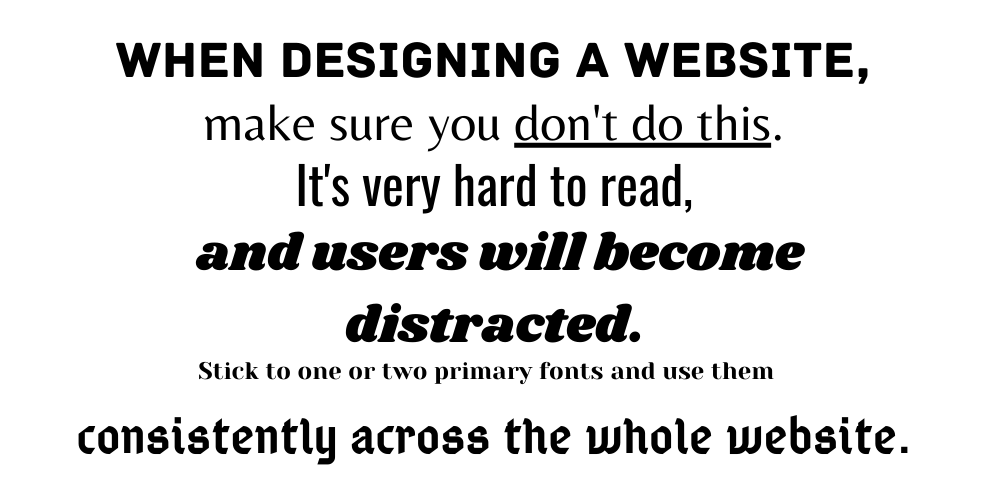10 Impactful Ways to Supercharge Your Life Science Website
By Jordan Eller

Is your life science website as good as it can be?
Chances are, it isn’t. Don’t feel bad, every site on the internet can be improved in some way. The good news is that many of the most impactful site optimizations are easy to implement. In our line of work, we’ve seen sites ranging from divine to disastrous. So how can you be sure that your life science website is buttoned-up and ready for showtime? Below is our list of optimizations that are guaranteed to please both Google and users alike.
1) Make your site responsive
When Forma was first founded, there was only one device on the market: personal computers. We’ve come a long way since then, and so has the selection of devices someone can use to browse your site. This is why it’s absolutely crucial to make sure your site is responsive to the major device platforms: desktop computers, smartphones, and tablets.

One quick caveat: Statistica reported that tablet ownership has declined in 2020 for the first time since it began measuring in 2010. So while it’s still considered part of the Holy Trinity of Devices, most people are using their phones and computers to browse the internet. This is why it’s crucial for you to make sure your site renders properly across multiple platforms.
2) Speed is everything
Let’s face it: none of us have the same attention span we had 20, 15, or even 10 years ago. People are impatient by nature, and this is why a speedy site is always something to prioritize. SEO guru Neil Patel reports that 40% of people abandon a website if it takes longer than 3 seconds to load. Not only is speed important for users, but it’s also a key component of ranking well in Google’s eyes. It’s a win-win!
It may sound like a daunting task, but sometimes it’s as simple as resizing images or discarding unused code. If you’re looking for a reliable tool to test your site speed, look no further than Google’s own Pagespeed Insights tool. Just keep in mind that some solutions require a degree of SEO or web development expertise.
3) Don’t be *too* unconventional
When designing a life science website, it’s important to be creative. It’s a highly-regulated industry after all, and making sure your website stands out can be an excellent way of enticing prospects to explore further. However, it can be easy to go overboard and design something so completely obtuse that users simply won’t bother diving deeper into your unconventional monstrosity. Remember that your goal should be to A) find out what your audience wants and B) deliver it to them as efficiently as possible. So while flashy animations and over-the-top design choices may seem nice on paper (or rather, on-screen), if there’s a chance you’ll alienate your users, it’s better off to keep things simple.
4) Keep your branding consistent
Your brand is your identity. It should be unique, purposeful, and elegant. Sadly, there’s nothing elegant about having twelve different fonts on your homepage, or seven different colors decorating your services pages. All too often, we’ve seen sites that have not prioritized consistent branding, and seem to have chosen colors and fonts at random with no true theme running through them. By having too many disparate colors or fonts, you disrupt the cognitive fluency of your site. Or, in plain English, it’s distracting.

If you don’t already have one, it’s worth developing brand guidelines for your business. Companies that don’t have a unified brand vision are at risk of being misaligned, both internally and externally. If you suspect your business could benefit from an alignment strategy, please contact us today.
5) Make your content easy to read
There’s a high probability that your life science website has content geared towards technically-minded users. Scientists, engineers, technicians, and the like. This isn’t a bad thing, especially if those are your target markets. But it’s important that your site content is able to be scanned at-a-glance, even if the actual copy itself is technical. Presenting massive walls of hard-to-read text with no images, links, or breaks can be exhausting for the user and cause them to leave your site. To be clear, we’re not advocating that you “dumb down” the content on your site, but instead, consider how it’s presented.
By presenting your content in an elegant, easily-digestible way, you won’t run the risk of bombarding the user with an overwhelming flood of information. On the main hub pages, be as concise as possible while still keeping your target keywords in mind. In whitepapers, newsletters, and blog posts, make sure to break up the text with images, videos, and other types of dynamic content to keep things interesting.
6) Whitespace is your friend. Mostly.
We’ve all heard the aphorism, “Less is more”. When it comes to designing a life science website, it can be an incredibly helpful philosophy. For the uninitiated, “whitespace” refers to the areas on the page that aren’t occupied by elements, textual, visual, or otherwise. Too often, the experts at Forma have seen brands struggle with this particular issue. It’s tempting to take everything you know and fill every corner of your site with information, menus, images, and links. But the truth is that this barrage of content only serves to push users away, not compel them to explore further.
French impressionist composer Claude Debussy famously said, “Music is the space between the notes”. And while Debussy had no inkling of things like “search engines” and “bounce rates”, the same principle applies to site design. If you’re looking to provide a pleasant user experience (spoiler: it will lead to more conversions), consider leaving some whitespace so users can breathe.
7) Your navigation menu is your lifeline
Your navigation menu is the primary way your visitors will get around your site. Continuing with the theme of elegant design, your navigation menu (henceforth referred to as “nav” for the sake of brevity) is arguably the most important element of any life science website. Think of it as a menu at a restaurant; your visitors will use it as a way to decide exactly what they want out of their experience.
In this sense, it’s best to have a concise, direct nav with as little fluff as possible. Does your list of services really need to contain 25 separate items? Does your “About Us” dropdown really need an individual page for each executive? Take a look at your analytics and measure exactly which site pages are performing well, and which could use a refresh (or consolidation). If you’d like to learn more about how to efficiently organize your site, drop us a line today.
8) Avoid cheesy stock photography
This is another repeat-offender in our lineup of poor design choices. To put it bluntly, stock photography of two people in labcoats smiling and shaking hands isn’t going to tell users that a brand is trustworthy. It did ten years ago, but in this modern era of the internet, websites need to try harder in order to send authentic trust signals.

The tricky thing is that using stock imagery is easy. All it takes is a cheap subscription to a stock service, or even a 10-second perusal of a free repository. But this quick-and-easy approach isn’t as effective as it was in the early days of the internet, when users were dazzled by even the most mundane imagery. Instead, invest a small amount of time into taking actual pictures of your team, your facility, and your offices. With just a basic understanding of graphic design, anyone can transform their site from looking like a 1990s chemistry textbook to a cutting-edge, genuine representation of their business and personnel.
9) Spellcheck is here to help
Let’s cut right to it: careless grammatical errors can devastate user engagement on any site. If you’re not paying extra attention to how your content is written, then there’s a chance that there may be some compromising errors that could send potential clients running for the hills. It goes deeper than simple misspellings; a poorly organized list or missing article in a critical sentence could cause enough confusion to make your users exit the page immediately. Not to mention that grammatically-incorrect content simply makes a brand seem inept and amateurish.
It may seem obvious, but sometimes the simplest solutions are the most important. By scrutinizing the grammar of your content, you’re one step closer to cementing your expertise, authoritativeness, and trustworthiness in the minds of your audience.
10) SEO should be a priority
There was an era where search engine optimization was seen as a mere suggestion and nothing more. Now, it’s one of the most vital elements for any website hoping to appear on a results page. All too often, we see websites that clearly haven’t prioritized SEO best practices, such as implementing logical header structures, adding alt text to their images, or appending metadescriptions to their site pages. By failing to adhere to SEO strategies, many websites will languish in virtual-invisibility on search engine results pages.
Thankfully, many brands are implementing SEO into their digital marketing strategies, either by hiring an external agency or developing an internal team. If you’re looking to boost your site rankings and drive organic traffic, contact the digital marketing experts at Forma.
But wait, there’s more…
It goes without saying that this list isn’t comprehensive; there are dozens (hundreds, even!) of ways to make your site as strong as it can be. From enabling browser caching to breaking free of an overreliance on JavaScript, there are always more things to be done when it comes to creating a solid life science website. Moreover, keeping up with Google’s shadowy Algorithm Updates and search trends is a never-ending journey that demands your full attention if you want your site to perform well.
The experts at Forma are committed to serving the life science community, and we’d love to discuss how we can support your digital marketing initiatives. If you’re looking for a steadfast partner who can align your brand and strengthen your market share, please contact us today.





